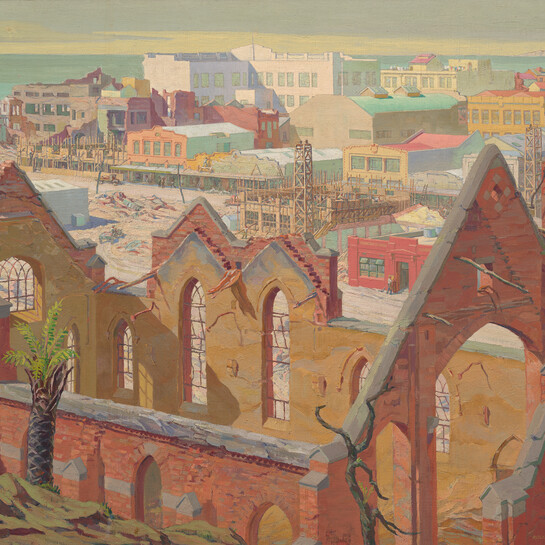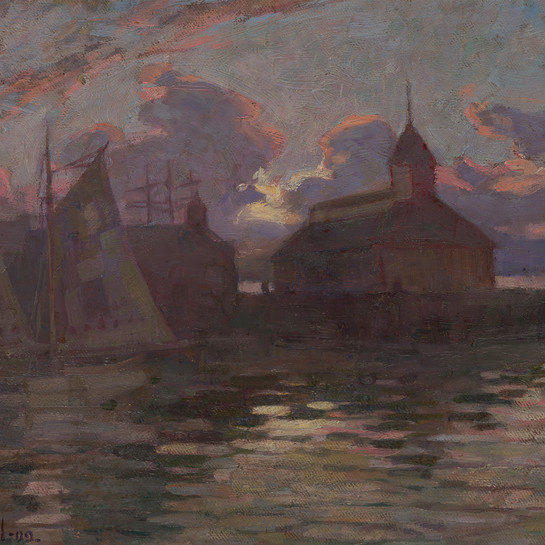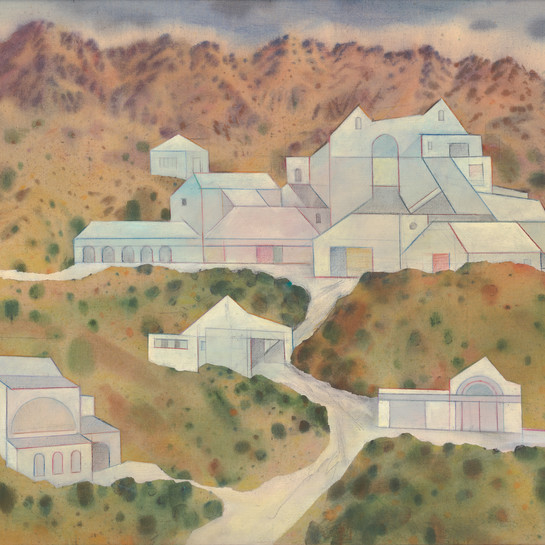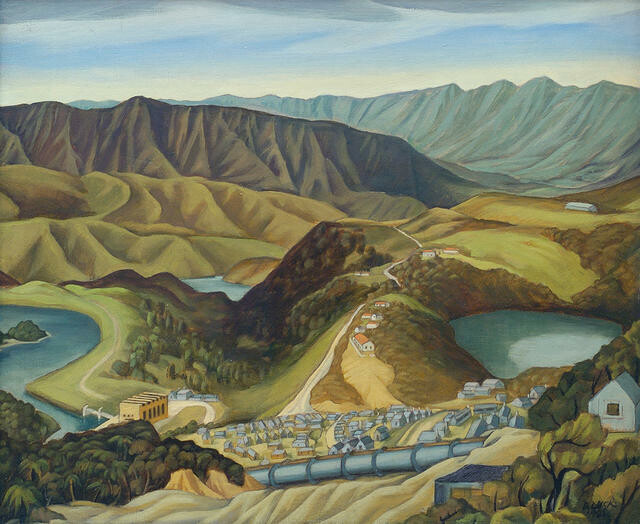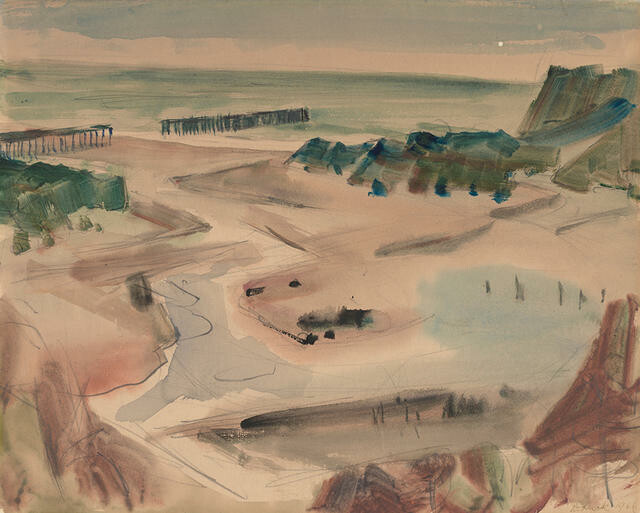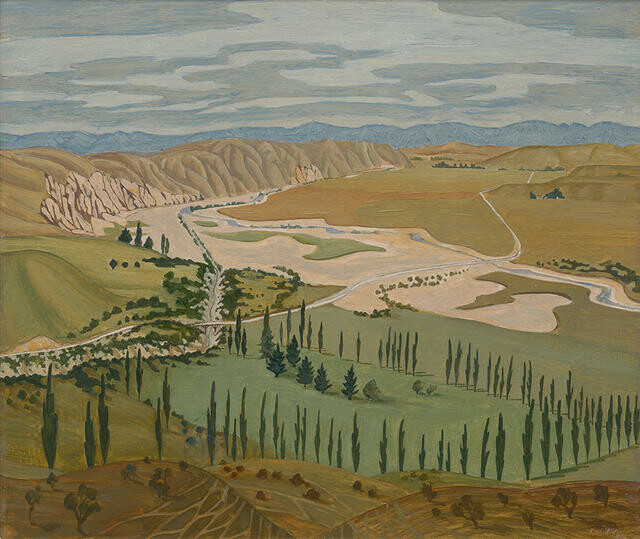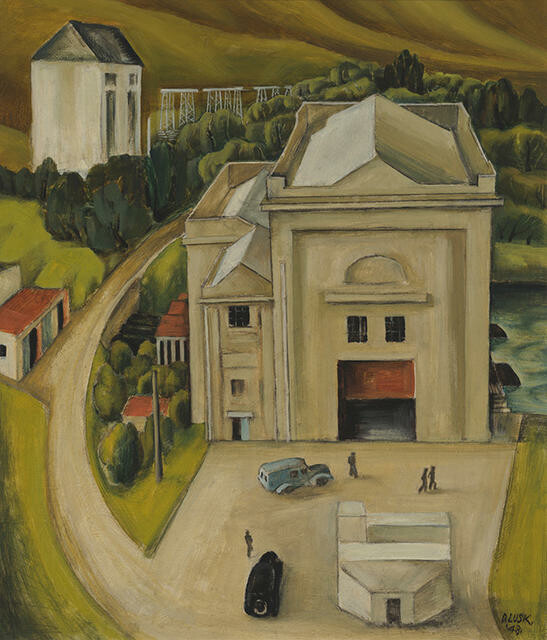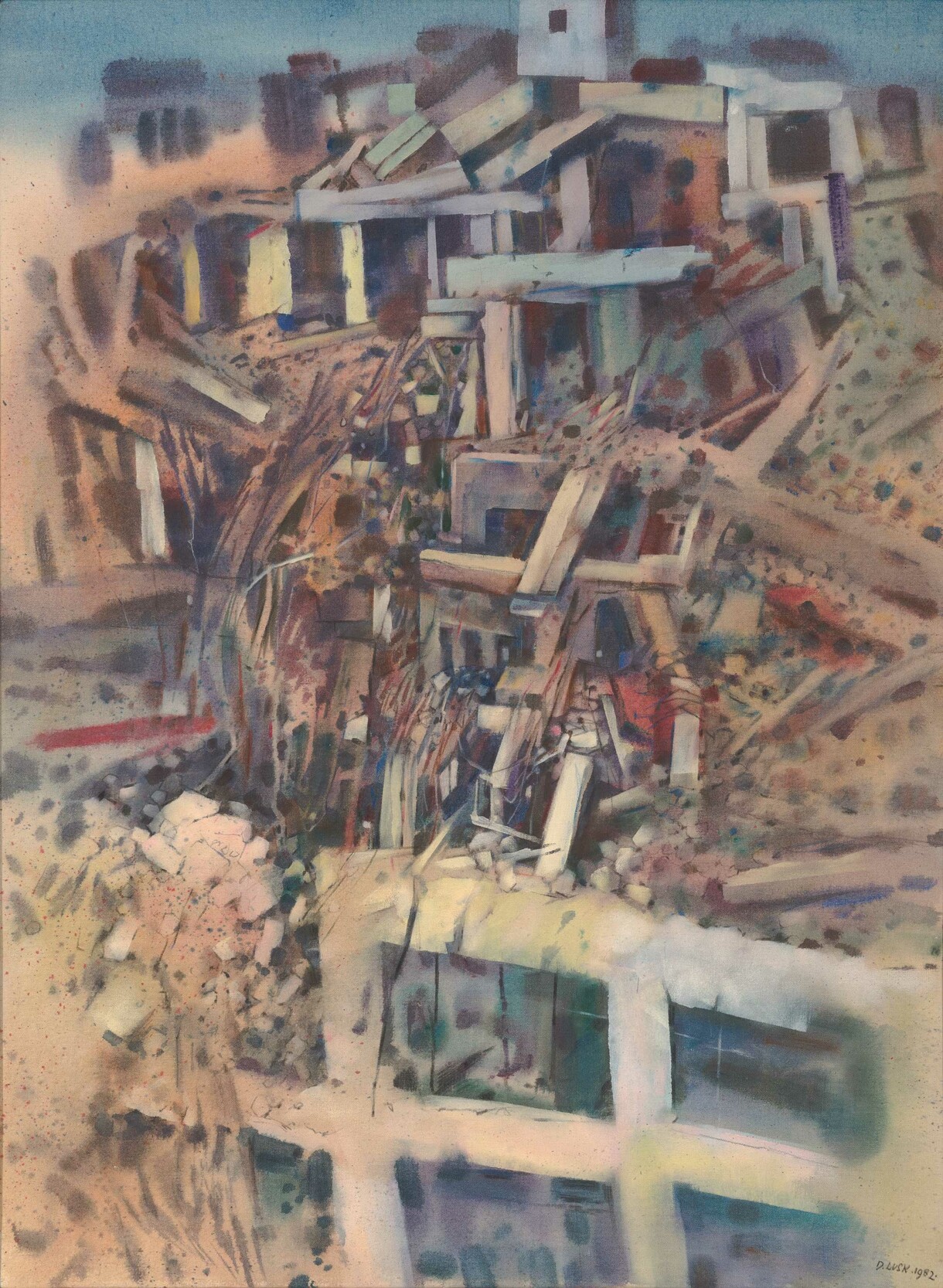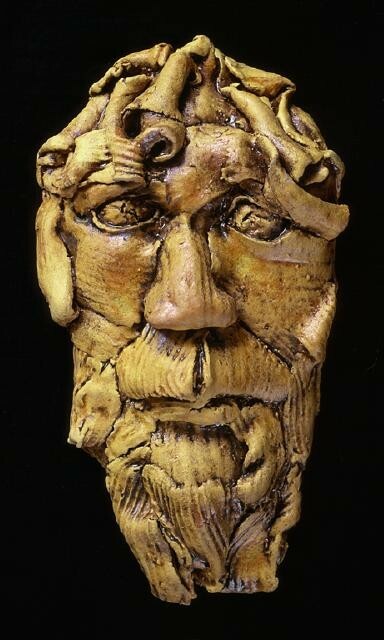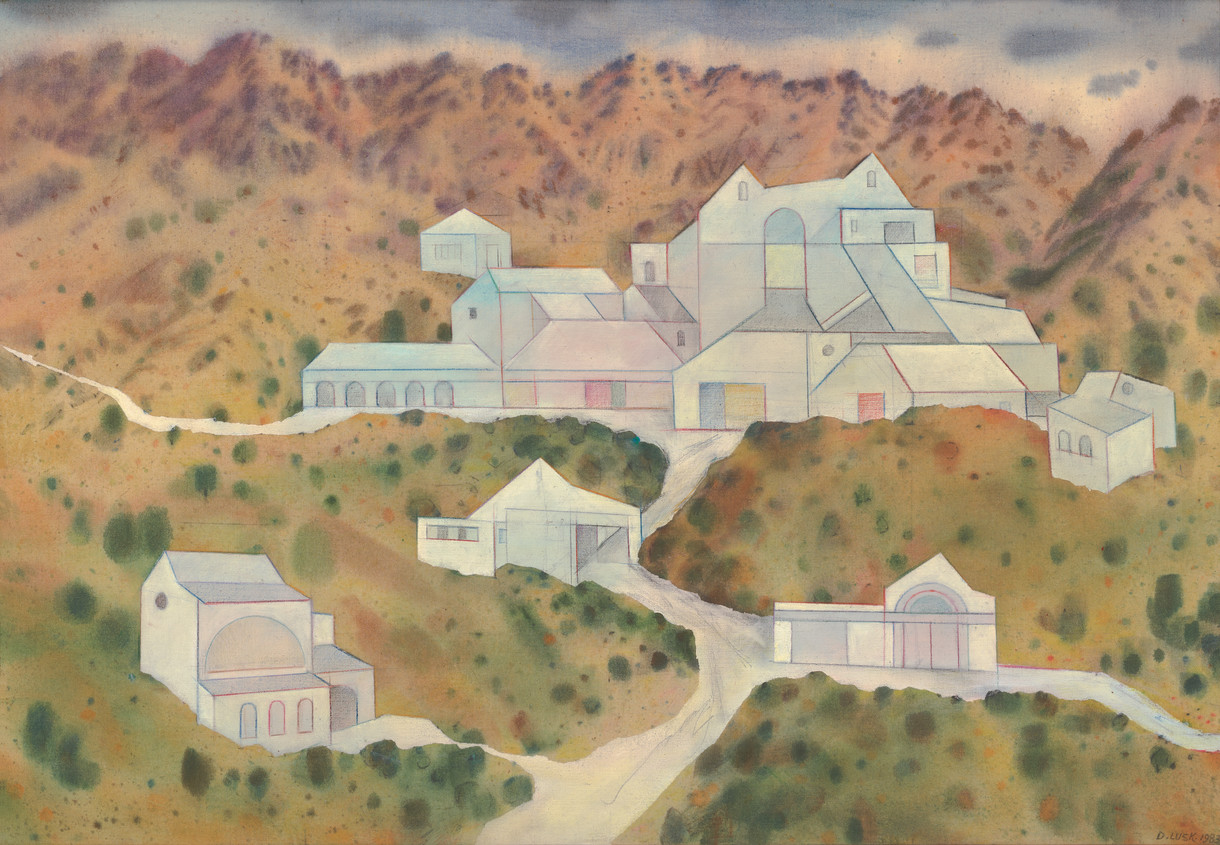Doris Lusk
Aotearoa New Zealand, b.1916, d.1990
Landscape, Overlooking Kaitawa, Waikaremoana
- 1948
- Oil on board
- Purchased 1955
- 688 x 798mm
- 69/92
- View on google maps
Location: Burdon Family Gallery
Tags: buildings (structures), houses, lakes (bodies of water), landscapes (representations), mountains, natural landscapes, power plants, trees
In 1948, Doris Lusk and her family stayed in the Lake Waikaremoana region near Te Urewera and Hawke’s Bay, spending time with her husband’s daughter from his previous marriage. Lusk took on the complex challenge of depicting the local environment and the recently completed government hydroelectric scheme, designed to feed the increasing urban appetite for electricity.
'Landscape, Overlooking Kaitawa, Waikaremoana' is one of four works she completed, and includes construction workers’ temporary accommodation in the foreground. Mountains and buildings appear in the works as competing presences, each claiming their own monumental weight and status.
(From Here on the Ground, 18 May – 17 November 2024)
Exhibition History
Daughter of an architect, and married to an engineer, Lusk was keenly attuned to structure. While artists such as Rata Lovell-Smith, Rita Angus and Christopher Perkins juxtaposed natural and constructed elements, such as bridges, telegraph poles and railway stations, Lusk chose more dominating features that resonated with weight, energy and a sense of industry. Artist Anne Hamblett recalled: “Doris always did a different sort of thing. Buildings and water stations. […] She liked doing big water pipes and machines.” This view of the newly built Kaitawa hydro-electric station and associated settlement was painted when Lusk visited her friends Ian and Adelaide McCubbin in 1948. Ian McCubbin was a construction engineer for the Waikaremoana hydro-electric power scheme, which included power stations at Piripaua and Tuai (also painted by Lusk and part of this exhibition). Here, the massive pipeline in the foreground seems to continually shift in scale, looming hugely over the miniature houses but dwarfed in its turn by the distant mountain ranges.
(Doris Lusk: Practical Visionary, 4 June – 30 October 2016)
Kaitawa is one of the three power stations that form the Lake Waikaremoana Hydro development scheme, inland from Wairoa in the North Island. Kaitawa was opened in 1948, the year Doris Lusk visited friends in the area. Lusk’s style shows similarities to the work of British artist Paul Nash (1889 -1946) in which he contrasted landforms and man made structures. Here the power station buildings are surrounded and dominated by the almost impenetrable barrier of the mountain ranges.
Lusk was born in Dunedin and studied art at the King Edward Technical College there from 1933 to 1939. She held her first exhibition in 1936. Lusk and her husband, Dermot Holland, moved to Christchurch in 1943. She exhibited with both the Canterbury Society of Arts and The Group. A potter as well as a painter, she tutored pottery from 1947 and was a foundation member of the Canterbury Potters Association in 1965. From 1966 to 1981 Lusk taught at the School of Fine Arts, University of Canterbury.
This painting was first exhibited with 'The Group', 1948.
(Label date unknown)
